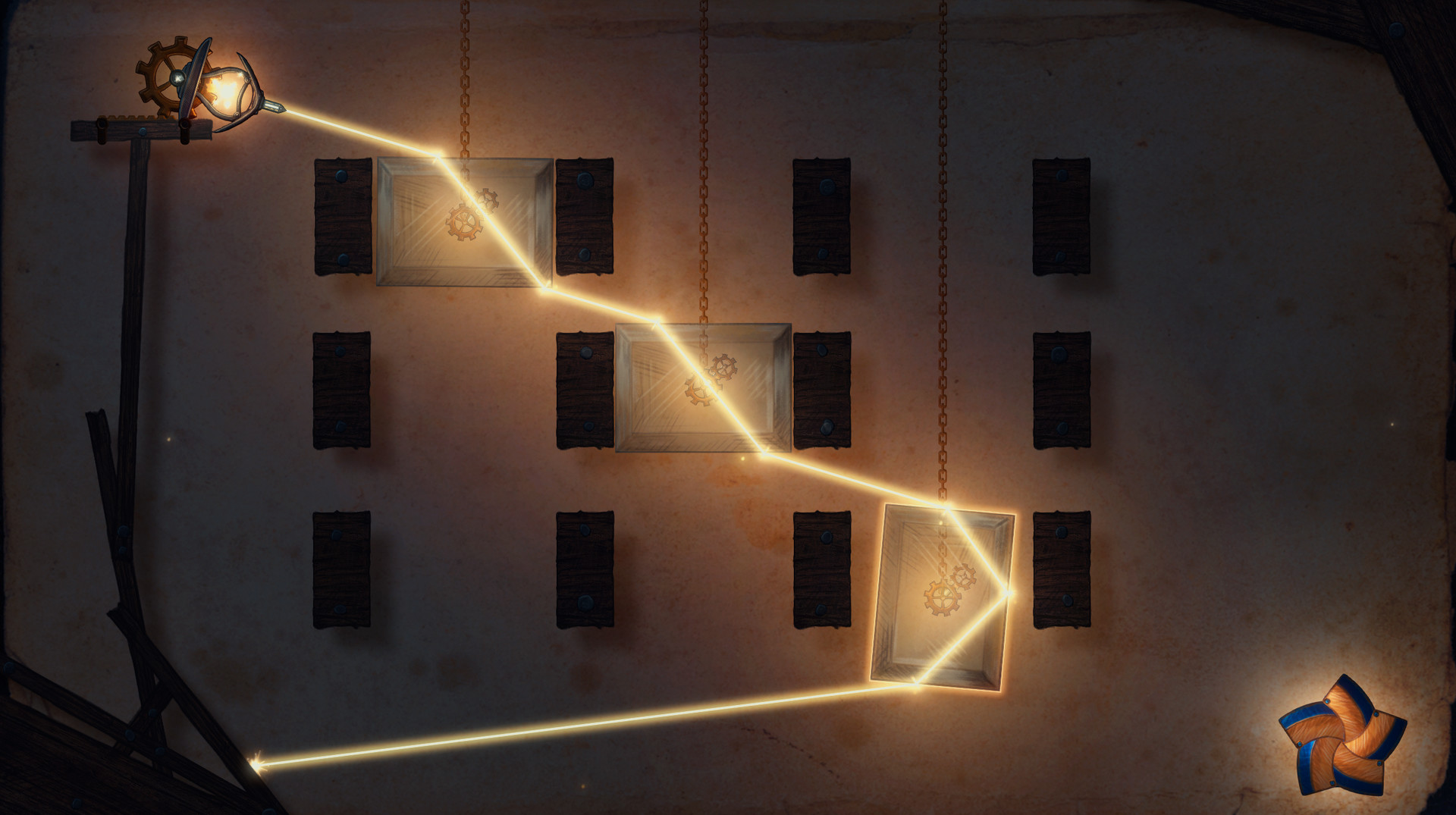Puzzles in this game are tied to the correct display and application of the laws of physics, which are not only a special subgenre of the “smart games” like Portal, but also a separate echelon of virtual entertainment. It seems that even ardent hardcore gamers don’t mind such games if they consistently adhere to the formula “combine business with pleasure”. The flip side of the coin is the niche of such projects, which are sets of levels without the slightest difference of the gameplay.
LIT: Bend the Light is one of those. In this game, you need to control a directed ray of light, which needs to be refracted and properly reflected so that the ray reaches its goal. The players to whom the optical subject is generally interesting – we recommend playing this game, at least because of the perfectly implemented and extremely realistic physical model of the light. But the rest, including fans of the puzzle genre, the game is likely to disappoint. There are too many “buts” in it. However, let’s take a look at the game closer.
 Gameplay and Levels
Gameplay and Levels
The whole game is three dozen levels that are unlocked sequentially. The task everywhere is the same – to bring to the target a beam from a light cannon on wheels. It is possible to move back and forth in a limited area, with the angle of the “shot” by the beam can be changed as well. At some levels, there is only one correct solution to reach the goal, but most of the other stages of the game have several ways to reach the goal (from 4 to 6). This, of course, is fascinating: how many elements of the environment to use, how to find the shortest path to the goal, and all this will become an incentive, only if you are interested in the topic. A random player will certainly notice frank differences in difficulty in the transition between neighboring tasks, and a meager assortment of improvised mechanisms. The latter is especially distressing. We are dealing with reflecting surfaces of various shapes (flat, convex, concave) and refracting objects (spheres, prisms, pyramids). Some of them are fixed motionless, some can be moved along the vertical axis, etc. In addition, the levels are filled with obstacles. Alas, that’s all that LIT has to offer. I do not know why developers haven’t used the other possible solutions of optics physics in their game like offhand and diffraction phenomenon (maybe due to technical difficulties, but I’m not sure).
Replayability
LIT: Bend the Light is a monotonous game, sometimes I think that even playing online slots like these – www.casinonic.com/en-CA/games/slots is much better. In addition, part of the decision in levels is so obvious that their embodiment comes to the fore. Optics is a thin matter, the position that the beam with the reflective-refractive elements have to be calculated almost up to a millimeter. And neither the keyboard nor the mouse is suitable for this. There is the possibility of a particularly soft smooth control, but even then it’s like little consolation. By the way, the game also provides the ability to skip a level if you can’t solve the puzzle. But again, a caveat: at the same time, only three levels can be skipped overall so you need to pick them wisely. It only remains to hope that someone else will take up the idea and execute it not at the level of a student diploma. And yes, the physical model in the game is gorgeous, if it wouldn’t be limited to reflection-refraction of light, it would be an absolutely wonderful puzzle game.
- Extremely realistic model of the behavior of a light beam when interacting with
environmental objects. - At many levels – several solutions at once.
Cons:
- The whole game is a set of not the most diverse puzzles.
- Not well thought out management.
- Difficulty from level to level jumps up and down.
If you love optics, lenses and light beams – then the game is for you. I cannot recommend this game to other players, since there are much better puzzle games out there.
- Genre: puzzle.
- Developer and publisher: Copperglass.
- Platform: PC.
- Minimum system requirements: Win 7, 1.5 GHz processor, 1 GB of RAM, Intel HD
Graphics 620, 600 MB on the hard drive.
This article contains sponsored links.





























































